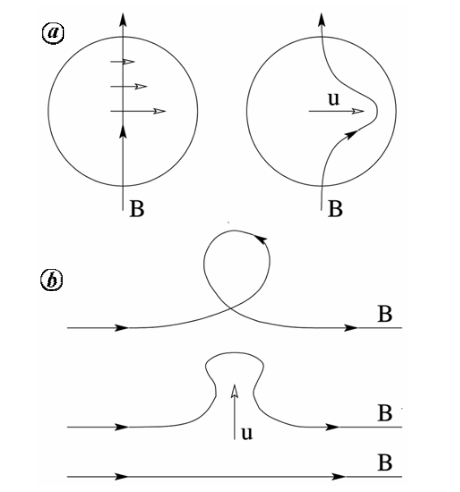Description

Dynamo theory explains how magnetic fields are generated and sustained in electrically conducting fluids, such as those found in the interiors of stars and planets. At its core, it describes a two-way coupling between fluid motion and magnetic fields: the motion of the fluid can stretch, twist and amplify magnetic field lines, while the resulting magnetic forces can, in turn, influence the fluid flow. In this project, we will explore mathematical models for the generation of large-scale magnetic fields, focussing in particular on the kinematic problem, in which the fluid motion is prescribed and the back reaction of the magnetic field is neglected. In this simplified setting, the central question becomes: can a given fluid flow amplify and sustain a magnetic field over time?
No prior knowledge of fluid mechanics or Maxwell's equations is assumed, as we will begin by reviewing the fundamental equations of magnetohydrodynamics (MHD) that govern the dynamics of conducting fluids and magnetic fields. Building on this foundation, we will explore several classic results in dynamo theory, including Cowling's anti-dynamo theorem, which sets constraints on possible field geometries, and Parker's mean-field dynamo, which provides a framework for understanding large-scale magnetic field generation in turbulent flows.
Following this, students will be encouraged to pursue a specific area of interest. Some possible directions include the following, though students are welcome to explore other topics aligned with their interests:- Kinematic dynamo action of particular flows (e.g., Roberts flow, Ponomarenko flow).
- Low-order dynamo models where the full PDEs are approximated by ODE models (or even one-dimensional maps) that seek to understand the underlying dynamics.
- Mean field dyanmo models (e.g., quenching and saturation mechanisms, symmetries of solutions).
Pre/Co-requisites
Analysis in Many Variables II is required. Special Relativity & Electromagnetism II would be useful but not essential. Fluid Mechanics III would complement this project well. It is likely that projects in this area will require some numerical computation in Python (or similar) but you do not need to be an expert programmer, just an eagerness to learn and try things out! Specific knowledge beyond the first-year programming course will not be assumed.
Resources
There is a vast literature on dynamo theory. Here is a sample you may look at to get started:
- Chapter 8 of Magnetohydrodynamics of the Sun (textbook by Priest).
- Accessible set of graduate lecture notes by Jones.
- An introduction to Magnetohydrodynamics. Textbook by Davidson providing general backround to MHD.
- An overview of dynamo theory by Choudhuri.
- Self-exciting fluid dynamos. Textbook by Moffatt & Dormy which goes into much more detail on dynamo theory.
- A review article on dynamos by Tobias.
For more information email: Laura Currie